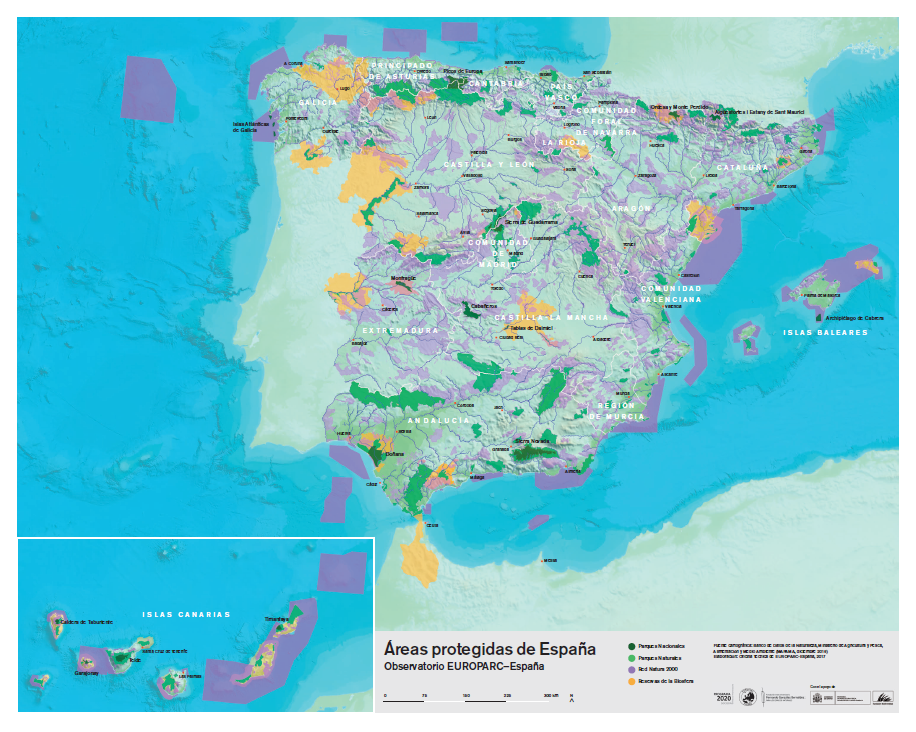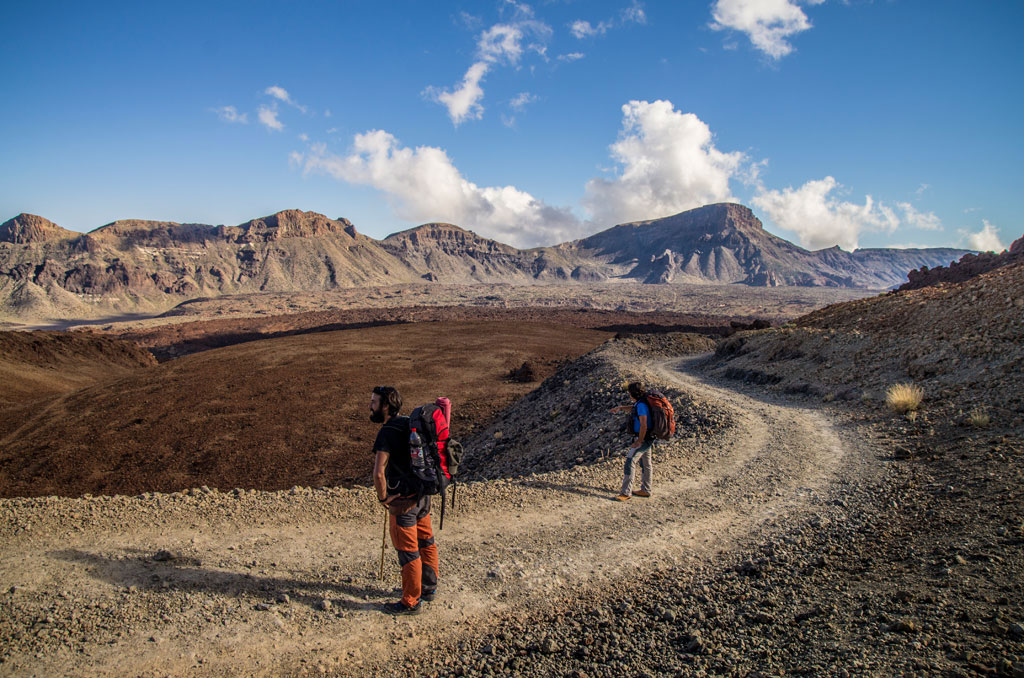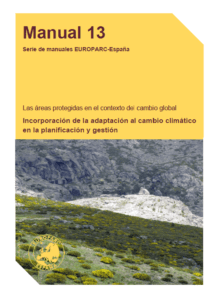The state of Protected Areas in Spain – EUROPARC-Spain launches 2016 yearbook
Cervus elaphus, CABAÑEROS National Park, Spain © Alfonso San Miguel Ayanz
To celebrate the United Nations World Environment Day, EUROPARC Spain launched yesterday the “Yearbook 2016 – the state of Protected Areas in Spain”. It is the most complete and systematic compilation about Spanish protected areas and their management challenges.
Together with the 2016 Yearbook, an updated map of protected areas in Spain has been published. What is the state of protected spaces in Spain? How are protected areas creating opportunities for nature, humanity and the economy?
Protected areas are the most widely tested tool in the world for nature conservation. In Spain, more than a quarter of the territory is dedicated to nature conservation. It exceeds by far the 17% of terrestrial protection established by the Convention on Biological Diversity, with 27%, and is close to the commitment of 10% in marine protection, reaching 8%.
EUROPARC-Spain, the main professional forum for protected areas in Spain, has been producing periodic reports to follow the evolution of the extraordinary natural and cultural capital represented by the almost 2,000 protected areas – as places for nature conservation and for the social and economic development of the territories in which they are based.

Cabo de Gata Nature Park © Park Archive. The total surface of Marine Protected Areas in Spain is 8%.
Protected Areas in Spain: facts & figures
Spain is the European country that more contributes to the Natura 2000 network, with over than 22 million hectares. This network includes 15 national parks and 151 nature parks, 290 nature reserves, 346 natural monuments, 56 protected landscapes, along with other legal figures used only in some autonomous communities, to a total of 1,958 protected natural areas throughout Spain.
In the yearbook, you will have access to information of the total surface of the terrestrial and marine protected areas per autonomous region; an extensive list of all the different typologies of Parks and chapters especially addressing Natura 2000, management plans, public use and tourism, climate change and ecosystem services.
Download the Yearbook and access the digital geographic information about all protected areas in Spain.

Sustainable Development – Parks as hubs for sustainability
Spanish parks receive at least 23 million visitors annually, 14.4 million to national parks. With such high touristic demand, there is a strong commitment among local and national authorities to implement sustainable development models, based on protected areas. Sustainable Tourism has been one of the privileged ways to promote regional cohesion and leverage economic and social benefits to the communities within the natural protected spaces.
Protected areas and businesses are highly committed to enhancing the quality of tourism services hence, Spain leads the ranking of Sustainable Destinations awarded with the European Charter for Sustainable Tourism in Protected Areas, having by the end of 2016:
- 44 Sustainable destinations awarded
- 10 autonomous communities working with the Charter
- 411 businesses certified, working in partnership with their protected areas
- creation of at least 1092 direct jobs with the application of the Charter methodology, which contributes to the settlement of population in rural territories
Moreover, Spain holds more UNESCO Man and Biosphere Reserves than any other country in the world, counting:
- 48 Reserves at national level
- 3 cross-border with Portugal
- the only Intercontinental Reserve declared to date, between Spain and Morocco.

The Teide National Park, in Tenerife, was the park most visited in Spain, with 3.298.444 visitors in 2015 © photo from www.webtenerife.com
Effectiveness of protected areas – Human Resources and Funding
The effectiveness of protected areas requires good management plans. In Spain, 67% of national parks and 52% of natural parks have a PRUG (Master Plan for Use and Management) in place and more than 65% of Natura 2000 sites have an approved management plan.
Human resources are also fundamental for the efficient management of protected areas. In recent years, there was a significant decrease in work and external staff hired, although the data for 2014 appears to indicate some stabilization. National parks have an average of 86 people per Park, lowering to less than 16 people in the nature parks. The estimated direct employment in 2014 for the management of national and nature parks is 2,380 people, a figure similar to that registered in 2010, and well below the 4,000 people estimated in 2005.

First rangers of Picos de Europa National Park, 1918 © Park archive
Finally, the effective management of a protected space requires an adequate budget. The downward trend in investment in parks seems to stabilize, although it is still lower than the levels of 2006. In 2014, The average investment in national parks was 2.4 million euros per park (95 € / hectare). The investment in nature parks is significantly lower, € 860,000 / park (€ 28 / hectare).
Climate change and protected areas
Protected areas, through the ecosystems they protect and their biodiversity, bring a multitude of benefits to society. The diversity of ecosystems and the natural and cultural landscapes represented in the Natura 2000 network contribute to water supply, provide quality food and raw materials, help regulate climate and air quality, control erosion, Soil fertility and pollination, as well as recreational and spiritual enjoyment, promoting a sense of belonging and maintaining local knowledge.
Like the rest of the territory, protected areas are being affected by climate change. However, the management tools and the availability of technicians makes them privileged areas to monitor, adapt and raise awareness on climate change effects. Since the publication of the EUROPARC-Spain manual “Incorporation of climate change adaption in the planning and management of protected areas” (for now only available in Spanish), protected areas began now to incorporate explicit measures in their management plans, to monitor and adapt to climate change.

The Future of Protected Areas in Spain
EUROPARC-Spain will continue to support parks better managing and protect their conservation values, especially through the implementation of the programme “Society and Protected Areas 2020: Protected Areas for Human Well-being”. In the words of Rafael Mata Olmo, President of EUROPARC-Spain,
Nature must be interpreted as an indicator of our society’s well-being, that must be translated into a firm commitment to guarantee the fulfillment of its environmental, social and territorial objectives.
For more information about EUROPARC Spain www.redeuroparc.org.
The preparation of the Yearbook was supported by the Spanish Biodiversity Foundation from the Ministry of Agriculture and Fisheries, Food and Environment.